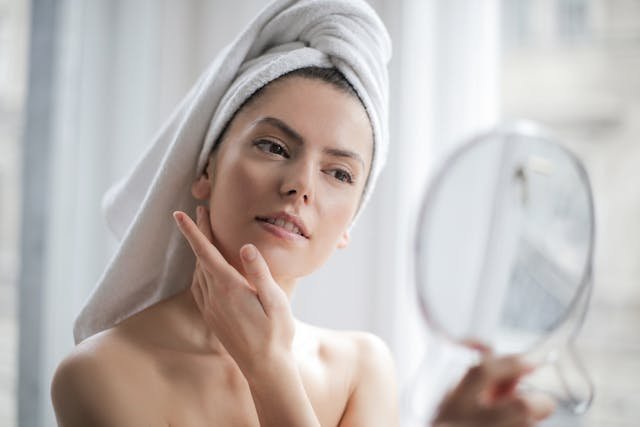PDO threading is growing in popularity among people looking for non-surgical face rejuvenation. Although this procedure has several advantages, correct aftercare is crucial to guarantee the best outcomes and reduce problems. Knowing how to treat the skin after PDO threading can help to improve outcomes and speed up healing. These six thorough aftercare suggestions for individuals receiving this cutting-edge therapy are really helpful.
Prioritize Skin Hydration
After a PDO thread lift, maintaining proper skin moisture is vital. The skin could feel sensitive or tight after the operation, which emphasizes even more the need for moisturizing. Hydrated skin aids to preserve suppleness and encourages healing. To avoid any irritation, a mild, scent-free moisturizer is advised. Since hyaluronic acid-based serums are known to help retain moisture, using one can also greatly increase hydration. Drinking lots of water throughout the day is equally vital as good hydration from inside improves skin condition and general healing after PDO threading. Regular hydration helps reduce dryness and flakiness, so the skin stays flexible and healthy during the healing stage.
Avoid Direct Sun Exposure
Protecting the skin from direct sunlight becomes vital after a PDO thread lift. UV radiation can cause inflammation and pigment problems that hamper the healing process and hence affect the treatment’s outcomes. For at least a few weeks after a treatment, patients should refrain from sunbathing or spending prolonged time outside without enough UV protection. Even on overcast days, one should always use a broad-spectrum sunscreen with a high SPF. Wearing sunglasses and a wide-brimmed hat might also offer further defense when outside. If sun exposure is inevitable, especially during peak sun, it is preferable to find cover and restrict exposure.
Manage Swelling and Bruising
Swelling and bruising are normal after PDO threading, and controlling these symptoms appropriately can improve both comfort and outcomes. In the first 48 hours following surgery, ice packs can be placed on the treated regions to assist in lowering swelling and ease pain. To prevent direct skin contact and, hence, frostbite, ice packs should be wrapped in a towel. Moreover, maintaining the head up when resting will aid in avoiding swelling since gravity helps to lower fluid accumulation in the face. Although some swelling is natural and anticipated, patients should regularly check their symptoms and see a doctor if swelling or bruising lasts longer than what is usual.
Refrain from Strenuous Activities
Intense activity might compromise the healing process. Avoid at least one week after treatment high-impact workouts, intense activity, or activities raising heart rate. Patients should also avoid bending over or lifting big things as these motions could strain the treated regions. Rather, light exercises like walking can help as they increase circulation without stressing the body too much. Giving rest priority during the first recovery period will help to reduce problems and guarantee good thread settling in the skin, therefore contributing to the general success of the operation.
Follow a Gentle Skincare Routine
After PDO threading, it is critical to maintain a light skincare regimen. The skin will be sensitive; hence, it is advisable to avoid using strong products or following vigorous skincare routines. Patients should not use exfoliants, retinoids, or any product with alcohol for at least one to two weeks following the operation. A simple regimen consisting of a nourishing moisturizer and a mild cleanser works best. Furthermore, avoiding any facials or skin treatments for many weeks after surgery is critical to minimizing inflammation and ensuring proper healing. Stressing a gentle approach to skincare during the healing period can assist to improve the outcomes of PDO threading and encourage healthy skin.
Use High-Quality Products
One of the most crucial components of sustaining results following a PDO thread lift is to employ high-quality skincare and follow-up treatments. When picking products for post-treatment care, it is critical to choose ones that are soft on the skin while also supporting healing and preserving the skin’s natural balance. Using high-quality, dermatologist-recommended products keeps the treated areas nourished and preserved, perhaps extending the procedure’s effects. Anyone contemplating this method must guarantee that high-quality PDO threading is performed in a reputable and trustworthy medical space. The quality of the threads has a direct impact on the treatment’s safety, efficacy, and lifespan.
Conclusion
After PDO, threading requires a good recovery, which depends on proper aftercare. Patients can improve their healing experience and maximize their benefits by giving hydration priority, shielding the skin from sun damage, controlling swelling, avoiding vigorous exercise, maintaining a mild skincare regimen, and arranging follow-up visits top priority. The degree of the duration and efficacy of the therapy depends much on the care given during this crucial period, which results in more pleasing cosmetic results and better general skin conditions.










